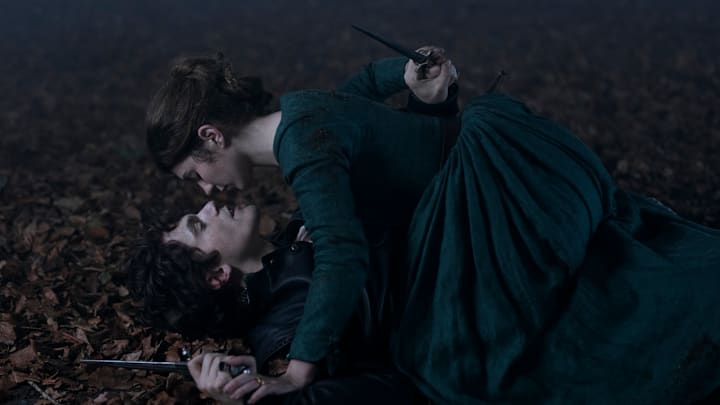There is a new alternate history series arriving on Prime Video at the end of the month. It’s all about My Lady Jane, which is based on a novel series and gives us a look at what could have been for the Nine Day Queen.
Of course, Lady Jane Grey’s real story was heartbreaking. Used as a pawn, Lady Jane Grey ended up with a crown that wasn’t hers. She’s not even remembered in history as Queen Jane, making it clear that her rule has always been viewed as illegitimate. Here’s a look at how she ended up as the Queen of Nine Days and why she was executed.
Edward VI made Lady Jane Grey queen
Lady Jane Grey was the granddaughter of Mary Tudor and Charles Brandon. That made her the grandniece of King Henry VIII of England, and she was a cousin of Edward VI, Mary I, and Elizabeth I. It was in between Edward VI and Mary I that you’ll find Lady Jane Grey as a queen.
She was born around 1537. By the time of her execution, she was still a teenager. And she didn’t even want to be queen in the first place! We can look at Henry’s Third Succession Act and fears of Mary I making the country a Catholic one again as the reason for Jane’s life to be upturned.
Edward was a young king. He was also only a teenager when he died, and he was going to die without children. That meant his half-sister, Mary, was going to end up with the Crown. Edward wrote in his will that he nominated Jane and her male heirs to be the successors of the Crown. After all, Jane was a Protestant and could fight for the reformation.
Why not choose Elizabeth, who was also Protestant? This would mean coming up with a legitimate reason to skip over his elder half-sister in favor of his younger one. He could use Mary’s illegitimate birth (after Henry had his marriage to Catherine of Aragon annulled) to make Jane the “rightful” queen. Henry’s marriage to Elizabeth’s mother Anne Boleyn was also annulled, which would mean she was illegitimate for the Crown too.
This was also a ploy by Edward VI’s chief minister. John Dudley, Duke of Northumberland found a way to gain power. He worked with Jane’s parents to arrange a marriage between her and his son, Guildford Dudley. This would hopefully make his son king.
And so, after Edward’s death, Jane was proclaimed queen. She arguably had no idea what was going on at the time, and she didn’t really want it. She was thrust into this decision.
Mary I of England was not going to let this stand
When Mary heard about everything, she made her way to London and gained supporters along the way. Even her half-sister Elizabeth stood by her side. They were not going to let the line of succession change, and neither were the people.
As Mary’s support grew, Jane lost hers. The Privy Council of England changed sides and proclaimed Mary as Queen of England. This meant that Jane had usurped the throne and was viewed as a traitor. However, at first, Mary arguably saw that it wasn’t her cousin who had orchestrated all of this.
Jane’s father-in-law was quickly executed for treason. Jane was held prisoner in the Tower of London for a few months. It was only when her father, Henry Grey, 1st Duke of Suffolk, was involved in a rebellion against Mary that Jane’s fate was sealed. Mary couldn’t have other rebellions using Jane’s name, so she opted to have her cousin executed instead. The one thing that sealed Jane’s fate was that she had signed a document as “Jane, the quene.”
Mary wasn’t the only Tudor monarch to execute a cousin due to the support for them. Years later, Elizabeth would execute her cousin, Mary, Queen of Scots, as support for the Catholic queen grew in England.
